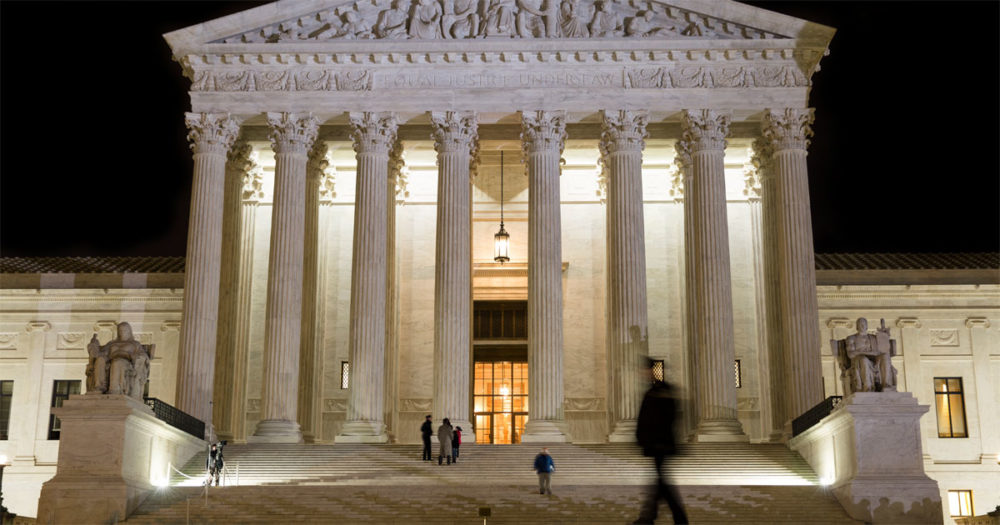I will always remember where I was yesterday—the day the United States Supreme Court turned its back on democracy. I was in Birmingham, Alabama, ground zero in the fight for racial justice and democracy, on a tour through the south to speaking to churchgoers about climate change. And it was there I learned that the court had issued a decision that will go down in history as one of its most dreadful and infamous, on par with the Plessy v. Ferguson ruling that sanctioned the Jim Crow laws that African Americans and others later opposed so bravely in Birmingham.
In its ruling, the Supreme Court held that federal courts can do nothing about extreme partisan gerrymandering, in which incumbents draw voting districts to ensure that the party in power stays in power indefinitely. With this decision, the court sanctioned an insidious practice in which politicians pick their voters, rather than the other way around.
The two cases before the court clearly demonstrate the egregious nature of extreme gerrymandering. In the North Carolina case, the state legislature and governor enacted a redistricting plan designed to ensure that ten of thirteen of North Carolina’s congressional seats went to Republicans, even though Democratic candidates typically receive about half of the votes statewide. The architect of the redistricting plan was crystal clear on the intent:
We are “draw[ing] the maps to give a partisan advantage to 10 Republicans and 3 Democrats because [I] d[o] not believe it[’s] possible to draw a map with 11 Republicans and 2 Democrats.” I think electing Republicans is better than electing Democrats. So I drew this map to help foster what I think is better for the country.”
In Maryland, the mapmaker working on behalf of the Democrat-led legislature and governor was given two instructions—make sure that seven of Maryland’s eight congressional districts would be held by Democrats, and that all incumbents were protected.
Both of these gerrymandering efforts, aided by advanced computing technology and granular voting data, worked exactly as planned.
The lower courts struck them both down, and the Supreme Court took the cases ostensibly to decide when partisan gerrymandering goes so far that it violates the equal protection clause of the 14th amendment, which “guarantees the opportunity for equal participation by all voters in the election” of legislators.
Despite the long line of precedents striking down racial gerrymandering and requiring one-person-one-vote when drawing districts; despite the obvious way in which extreme gerrymandering denies voters the right to elect representatives of their choice; and despite the fact that the political system cannot be expected to remedy itself, the court essentially threw up its hands and claimed that it was beyond judicial capability to draw the line between permissible and unpermissible gerrymandering.
Not only is this rationale utterly unbefitting of the goals and grandeur of the US Constitution and the historic role the federal courts have played in enforcing it, it is simply incorrect, as my colleague Michael Latner points out.
As the dissenting opinion forcefully puts it, “for the first time ever, this Court refuses to remedy a constitutional violation because it thinks the task beyond judicial capabilities. And not just any constitutional violation. The partisan gerrymanders in these cases deprived citizens of the most fundamental of their constitutional rights: the rights to participate equally in the political process, to join with others to advance political beliefs, and to choose their political representatives.”
What we must do
If there is any silver lining to this blatant judicial abdication, it is this: voters now have no choice but to demand a political remedy to this problem. They can do this at the voting booth by supporting candidates committed to drawing fair district lines. They can support ballot initiatives that take the power of districting out of the hands of elected representatives (in states that allow it). And they can support democracy reforms at the federal level, such as HR 1, which requires states to establish independent commissions to draw district lines.
Unless and until this happens, we can continue to expect a government that is unresponsive to the will of the voters. This means gridlock and excessive partisanship on all of the issues of our time, including issues that UCS focuses on—climate change, nuclear weapons, food sustainability—as well as so many others such as immigration, gun control, and health care.
In Birmingham, those who fought for civil rights had the US Constitution and the federal courts on their side. Tragically, in today’s battle for democracy, we do not. It means we simply must fight harder.

